Underrated small towns in the world’s most beautiful country
Secret Italy
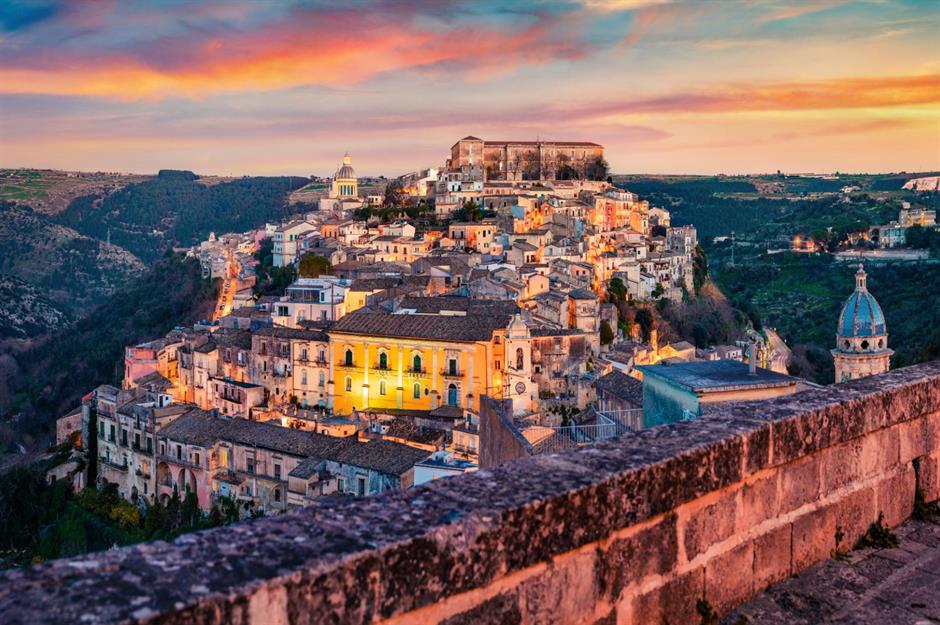
We adore the historic streets of Rome, the colourful charm of Cinque Terre and the opulent canals of Venice. But we don’t love the throngs of tourists that come with Italy’s most well-trodden destinations. So we’ve done some digging to find the country's most stunning underrated small towns. We recommend visiting each in low season for the most tranquil experience. From higgledy-piggledy hilltop settlements to coastal communes, Alpine villages and remote island retreats, here are our favourite hidden spots in Italy to explore – before everyone else does...
Trevi, Umbria
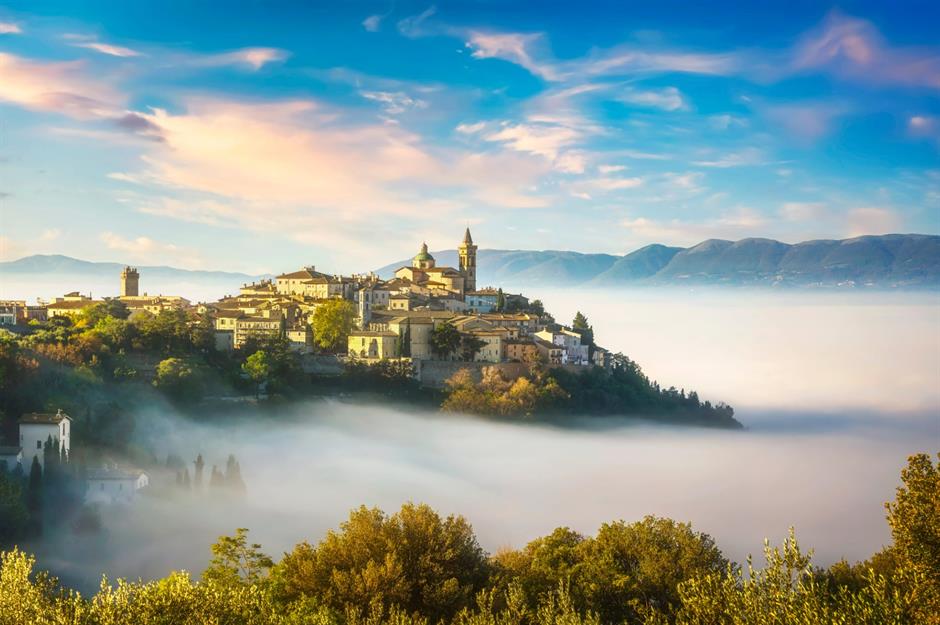
Spilling out across a hill that rises through early-morning mist, this captivating village in the central region of Umbria frequently ranks among the most beautiful in Italy. But Trevi is far more than just a pretty face. Surrounded by olive trees, it’s gained a reputation as the olive oil capital of the country and olive oil permeates every part of its cuisine, in which locally sourced ingredients reign supreme. There are also Roman walls from the 1st century BC, Gothic churches and art galleries to explore, as well as Europe’s first museum dedicated to – what else? – olive oil.
Love this? Follow us on Facebook for more travel inspiration
Polignano a Mare, Puglia
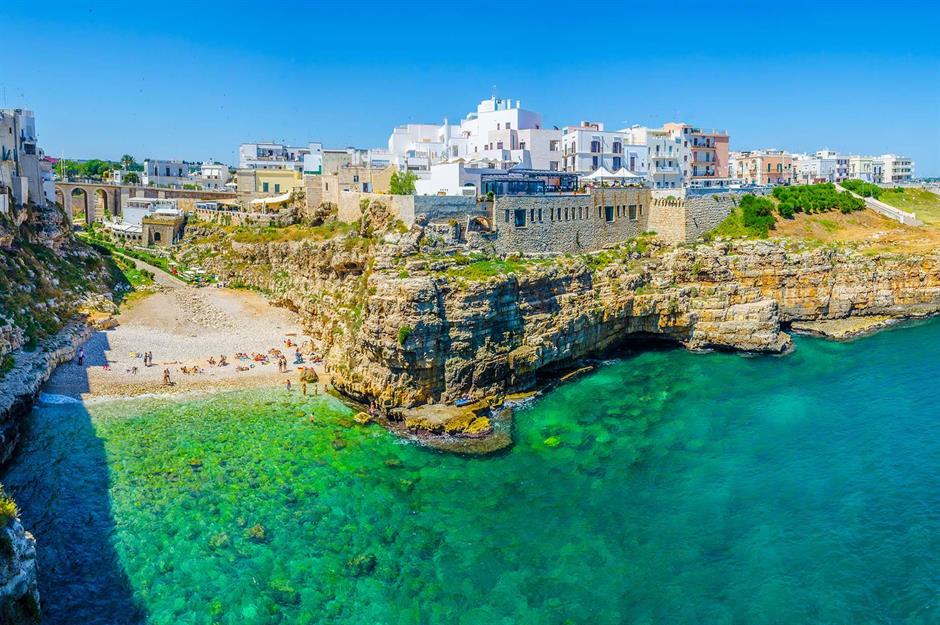
A gem on Italy’s enticing Adriatic coast, Polignano a Mare teeters dramatically on the edge of a steep cliff. Its small pebble beach, edged by those limestone cliffs, is one of the main draws for this whitewashed Puglian town. But there's plenty of history here too, as it's thought to be one of the most important ancient settlements in the region (it's even believed to be the site of the ancient Greek settlement Neapolis of Apulla). The tiny centro storico (old town) packs in charming churches, winding streets and panoramic terraces overlooking the emerald waters. The crowds are already beginning to catch on to this one, so avoid visiting in summer for a quieter experience.
Lucca, Tuscany
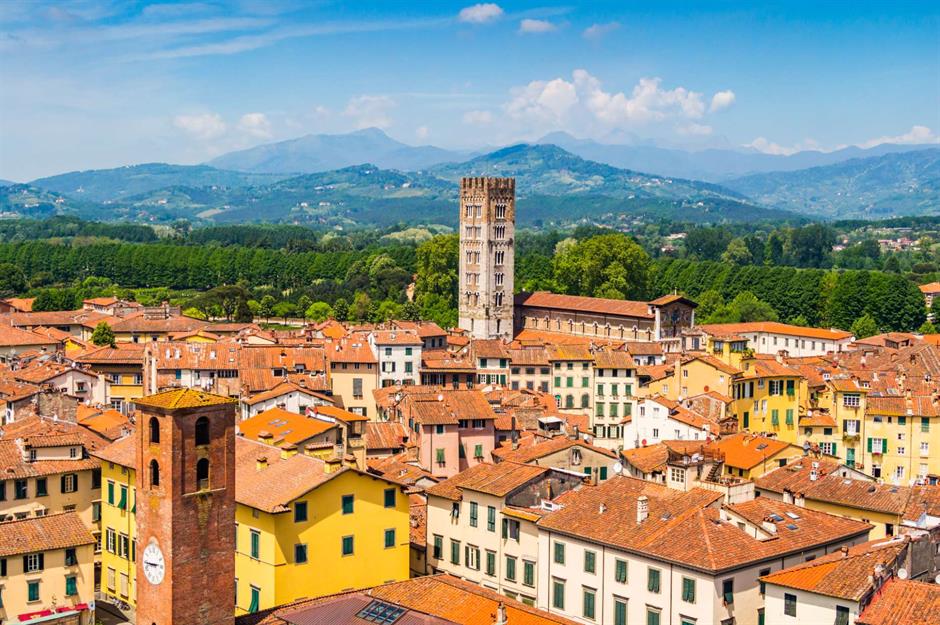
Tucked in northern Tuscany’s achingly beautiful countryside, Lucca is another destination that’s often missed by the tourists that flock to Florence and Pisa. It's a shame, as this characterful city has plenty to offer. Nicknamed 'the town of a hundred churches', there are lots of sacred sites to explore, from the Romanesque grandeur of Duomo di San Martino to the vertiginous, arch-laden towers of the church of San Michele. When you’ve got your fill of history, indulge in some of Lucca’s celebrated cuisine – buccellato, the region’s traditional sweet bread, is a must.
Porto Venere, Liguria
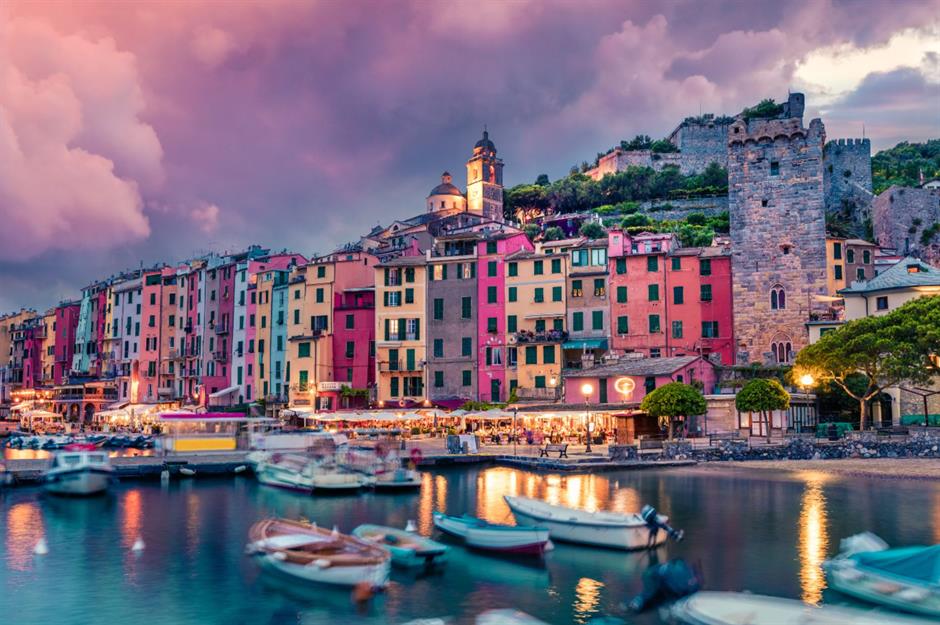
With its rainbow-coloured houses lining a harbour filled with bobbing boats, you could be forgiven for thinking this gorgeous town was one of the Cinque Terre. In fact, it’s sometimes dubbed the sixth member of the iconic set, and is part of the same UNESCO listing, but it comes with a fraction of the tourists. Overlooking the Gulf of La Spezia on the Italian Riviera, its steep streets are lined with medieval buildings in which you’ll find an enticing array of shops, restaurants and food stalls. If you’re keen to explore further afield, check out the five-hour hiking trail between Porto Venere and Riomaggiore – plenty of eye-popping coastal views guaranteed.
Bergamo, Lombardy
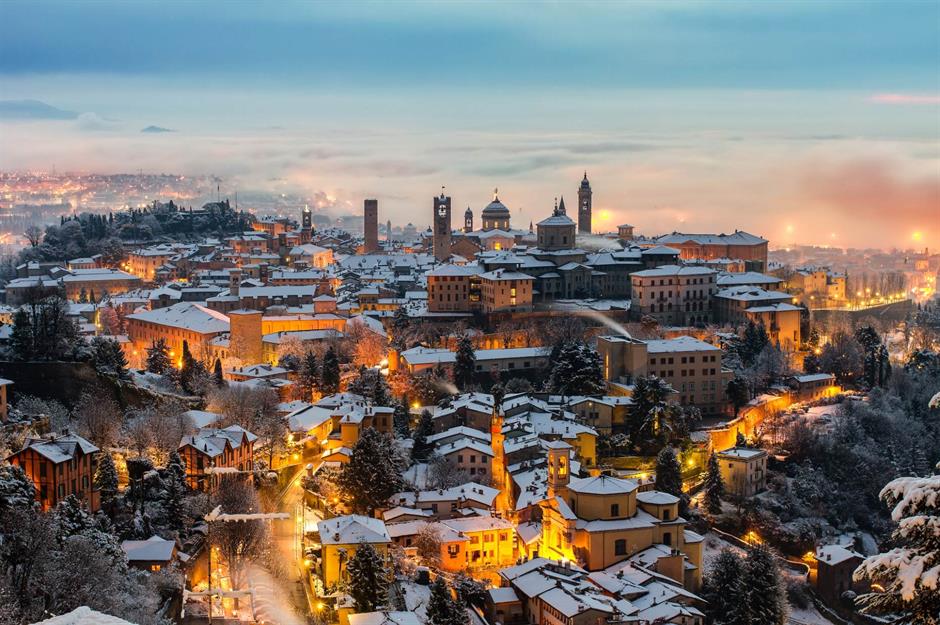
While many travellers make a beeline for Milan, nearby Bergamo should be high on your list for an off-the-beaten-track break. It offers all the magic of a hilltop town but all the amenities of a large city, and it’s just a 15-minute drive from an international airport. Located in the foothills of the Alps, Bergamo is divided into a medieval walled upper city (Città Alta) and a lower city (Città Bassa), which are connected by a retro funicular. We’d recommend stopping into one of the three churches in the main square, Piazza Vecchia, which are among the city’s oldest and most beautiful buildings.
Ferrara, Emilia-Romagna
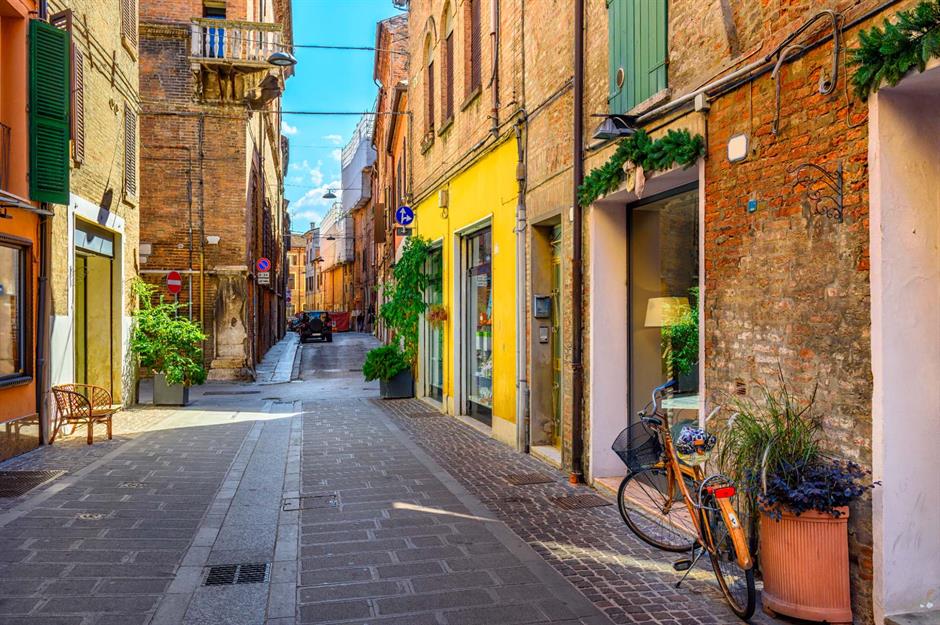
Surprisingly overlooked despite being a UNESCO World Heritage Site, Ferrara is situated in the Emilia-Romagna region of Italy, not much more than an hour’s drive from Venice. Yet travellers seeking tranquillity will be pleased to know that this historic hub is a world away from the crowds of the Floating City. Instead, you’ll find that a peaceful atmosphere pervades its frozen-in-time squares, castles and ancient city walls. Make like the locals and explore by bike, or take a 5.6-mile (9km) hike around the walls to get an overview of the beguiling Renaissance city.
Civita di Bagnoregio, Lazio
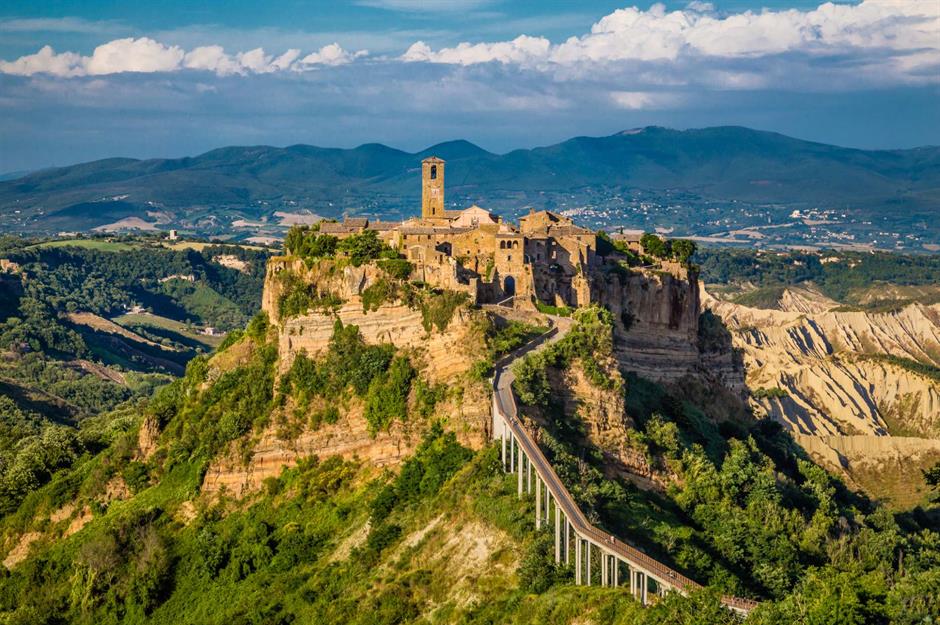
Not only is Civita di Bagnoregio drop-dead gorgeous, it’s also got an entrepreneurial spirit – which might just save it from destruction. The pint-sized settlement, located around 74 miles (119km) north of Rome, is at risk of disappearing: in 2014 and 2015, a series of landslides meant that some of its medieval buildings fell down into the ravine below. So to recognise the town’s fragile beauty and boost tourism, officials started charging visitors a fee of up to €5 ($5.27) to enter, which has been used to abolish municipal taxes for residents and preserve the town’s buildings.
Ascoli Piceno, Marche
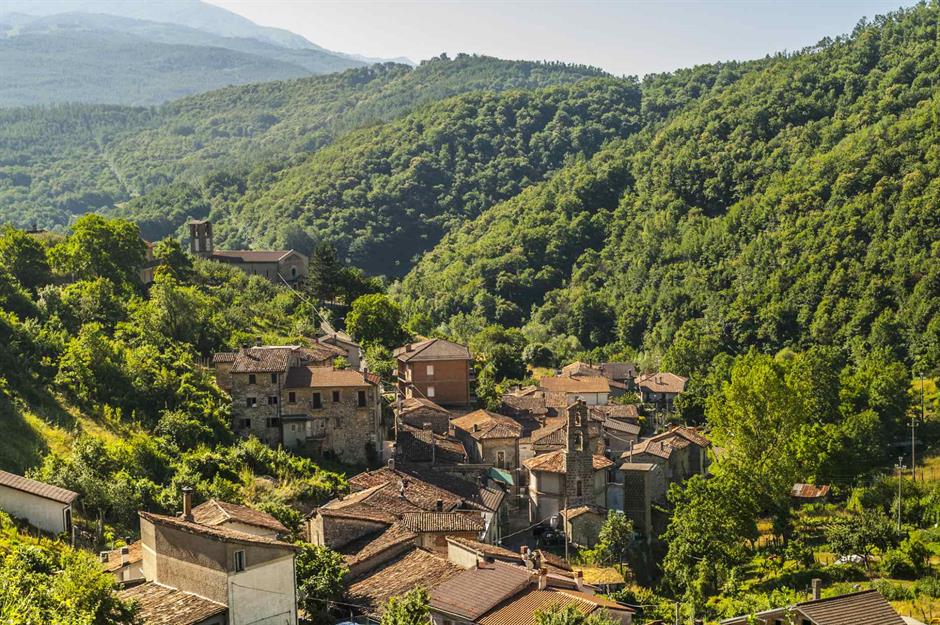
A dinky cluster of houses cradled by verdant hillsides, Ascoli Piceno lies at the confluence of the Tronto and Castellano rivers in central Italy’s Marche region. The historic town is best known for the travertine stone from which many of its buildings are crafted – it takes on an ethereal appearance after dark, when it emits a subtle glow under moonlight. Although its romantic piazzas, churches and spires are beautiful at any time, making this storied town an ideal base for exploring the area’s rolling countryside and beautiful beaches.
Orta San Giulio, Piedmont
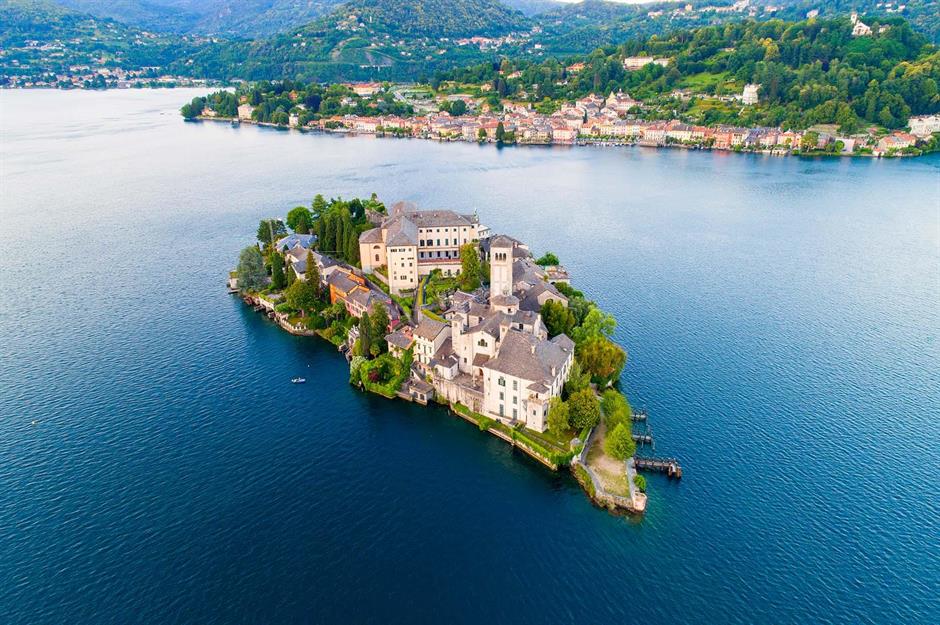
The jewel in the crown of this lakefront commune is Isola San Giulio: a tiny island in the middle of the lake with a remarkable basilica dating back as far as the 9th century. Yet the town itself, which sprawls along the shores of Lago d'Orta in northern Italy, is just as charming. Here you’ll find a lovely mix of rustic trattorias, narrow streets lined with boutique glassware shops and cafés on lively little squares, plus plenty of swimming spots to enjoy a dip in the lake’s clear blue waters. Get a view of it all from the Sacro Monte, a Catholic complex with lots of pretty chapels dedicated to St Francis of Assisi.
Viterbo, Lazio
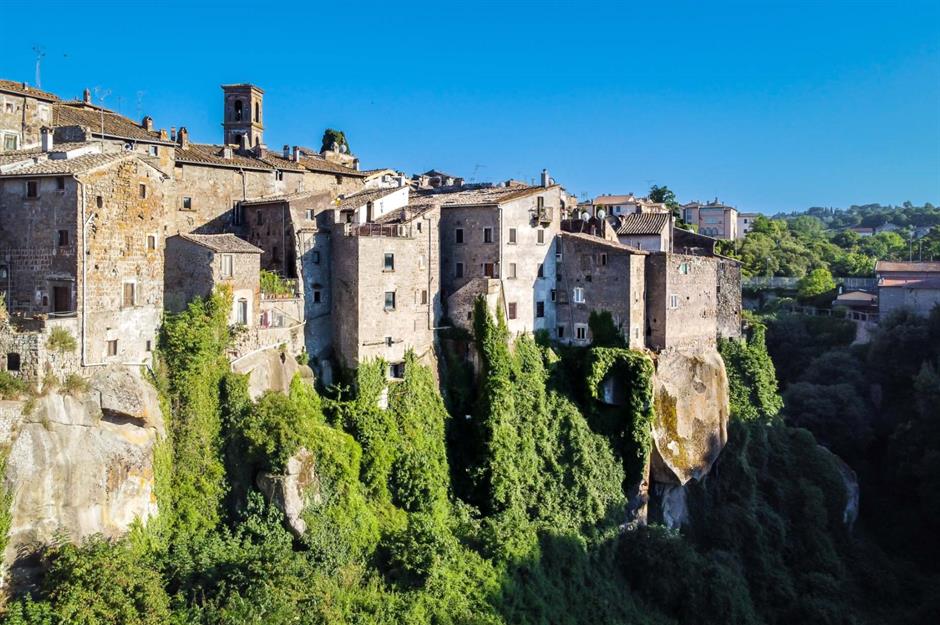
With its remarkably well-preserved medieval core, Viterbo is a must for history buffs. The town, located in northern Lazio in central Italy, is of pre-Roman Etruscan origin, but owes much of its important architecture to the Middle Ages. In fact, for a brief period in the 13th century, it served as the home of the Pope and was considered more important than Rome. Although the majority of its buildings were tragically lost during the Second World War, Viterbo was painstakingly reconstructed and today its grey stone houses, walls and bridges make it a fascinating place to stroll around.
Savoca, Sicily
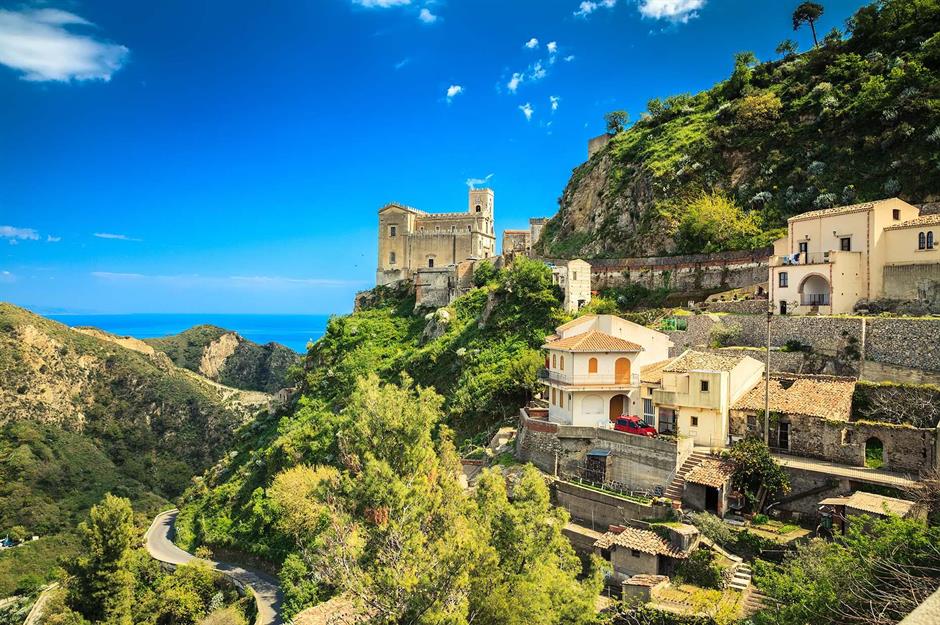
Set on a craggy hilltop in north-eastern Sicily, this precarious village might be small, but it certainly delivers on storybook charm. The Byzantine church of San Nicolo and Bar Vitelli (housed in the 18th-century Palazzo Trimarchi) were used as filming locations in the iconic movie The Godfather, but thankfully Savoca’s stardom hasn’t brought hordes of tourists here yet. With the sparkling Ionian Sea in the background, the commune is a maze of narrow and steep cobblestone lanes crawling up and down, which makes it a perfect place for snapping photos and sightseeing.
Matera, Basilicata
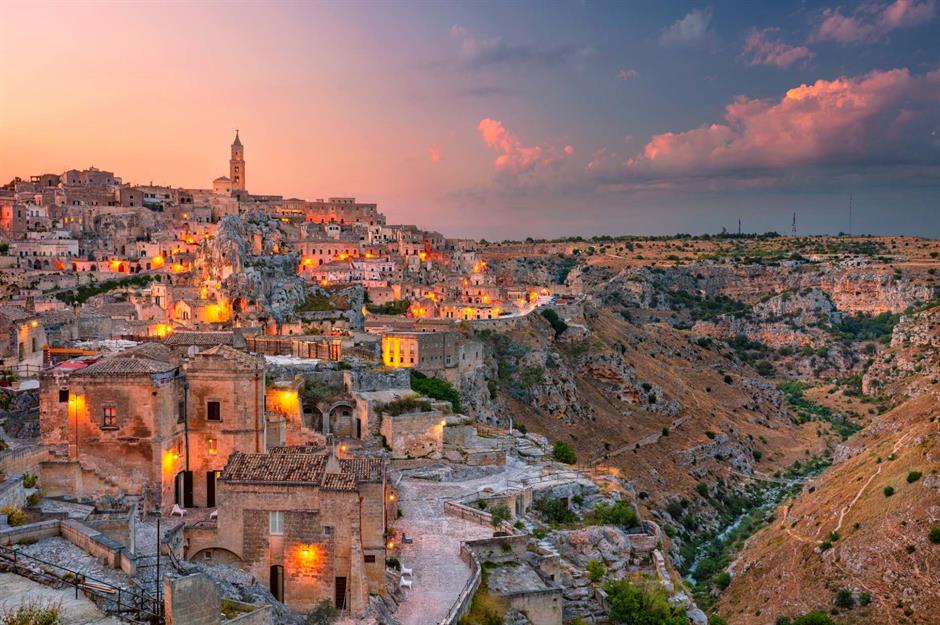
Found in southern Italy’s Basilicata region, this little Puglian city looks utterly magical at sunset, with its stone buildings illuminated by an array of twinkling lights. The clifftop settlement remains surprisingly little-visited by international tourists, although that’s beginning to change after it featured in the recent Bond film, No Time To Die, and was named a European Capital of Culture in 2019. We’d highly recommend checking out its ancient cave dwellings, the Sassi di Matera, which have existed for some 9,000 years, as well as peeking into its rock-hewn churches and wandering its narrow alleyways.
Sorano, Tuscany
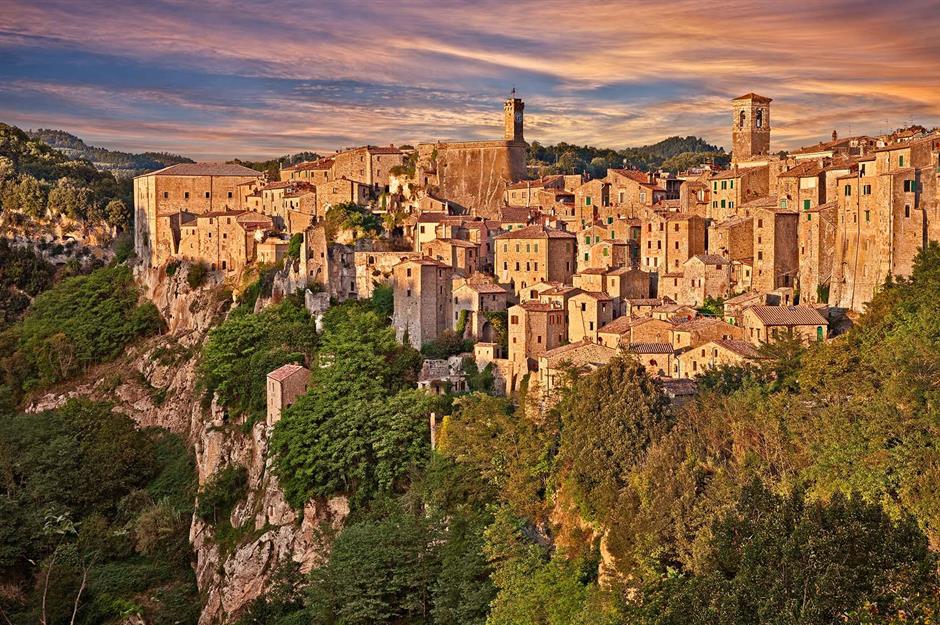
One of the lesser-known towns in the prized region of Tuscany, Sorano is a maze of narrow alleys, pretty courtyards, winding staircases and cellars carved into the rock. The medieval town is built almost entirely from warm-hued brown stones, which appear to almost blend in with the landscape. Don’t miss a visit to the imposing 14th-century Orsini Fortress which looms over the town, offering a vivid insight into what life would have been like centuries ago.
Lecce, Puglia
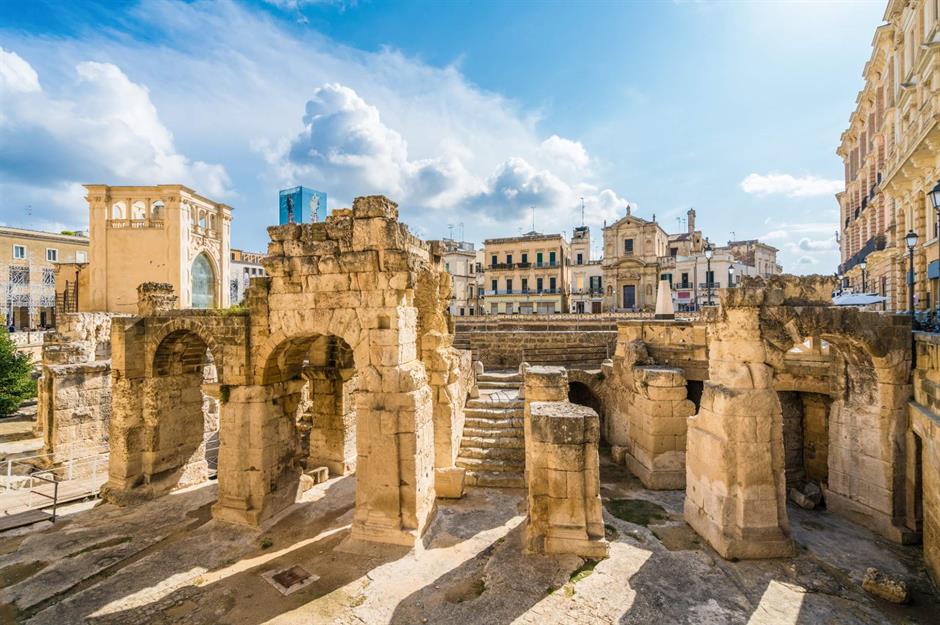
Lovely Lecce oozes rustic Puglian charm: think hidden squares, arched walkways and historic sandstone buildings with flower-covered balconies. Located in the stiletto of Italy’s boot, the gorgeous city is home to a Roman amphitheatre (pictured) which once accommodated up to 14,000 spectators across two tiers (though only the lower tier remains today). Once you’ve marvelled at this ancient wonder, enjoy the car-sparse and highly walkable old town, popping into its independent boutiques and laid-back restaurants.
Trento, Trentino
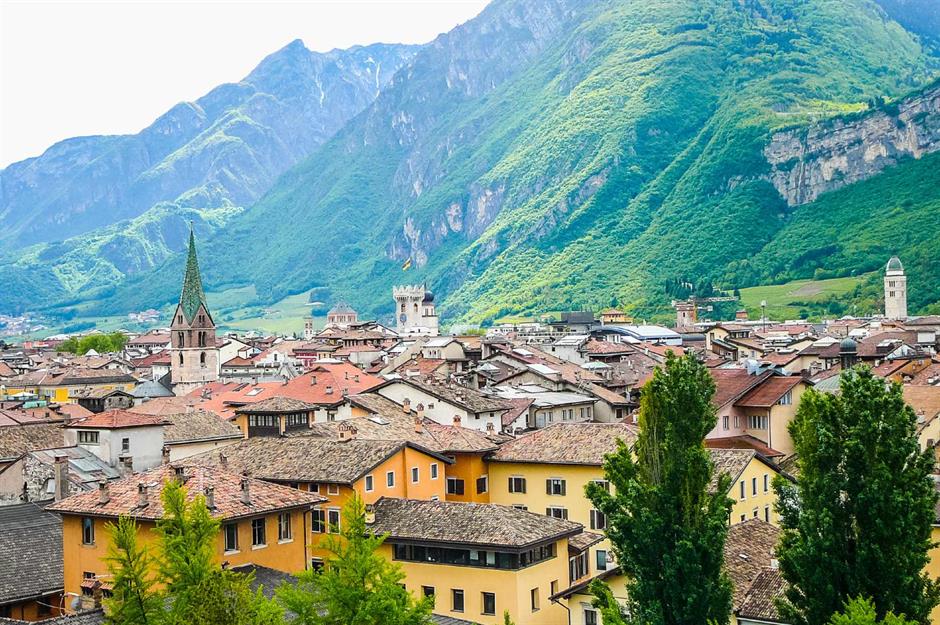
The gateway to Italy’s mountainous Trentino region, which is a paradise for hikers in summer and skiers in winter, Trento offers a perfect mix of history, nature and culture. Start at the Piazza Duomo and get a close look at the Fountain of Neptune before perusing the intricate frescoes dotted around the square. Then, head out to see the Castello del Buonconsiglio, a 13th-century castle which is just a ten-minute walk from the Piazza Duomo and boasts a fabulous collection of art and artefacts. Best of all, you’ll get to enjoy plenty of remarkable vistas of the razor-sharp Dolomite mountains, which provide an impressive backdrop to the town.
Tellaro, Liguria
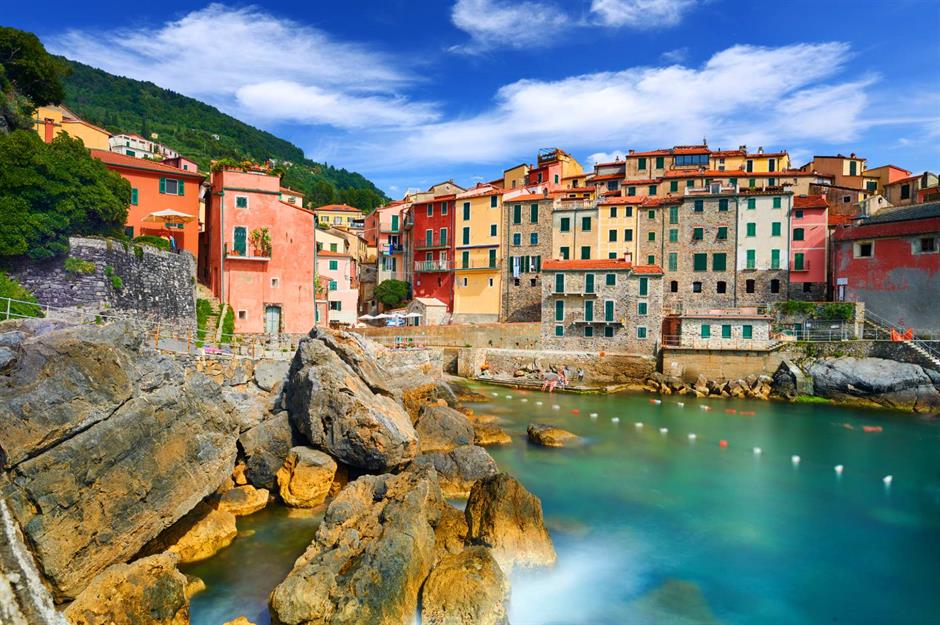
Dubbed as Cinque Terre without the crowds, Tellaro certainly has all the romantic beauty of those famous towns. Tellaro is found around an hour south of Cinque Terre on the Ligurian coast, and is filled with colourful little houses clinging to the cliffs, with narrow alleyways snaking between them. Although the town doesn’t have a beach, you’ll find two enticing (and swimmable) bays at Fiascherino, around 0.6 miles (1km) north of the town centre.
Cefalu, Sicily
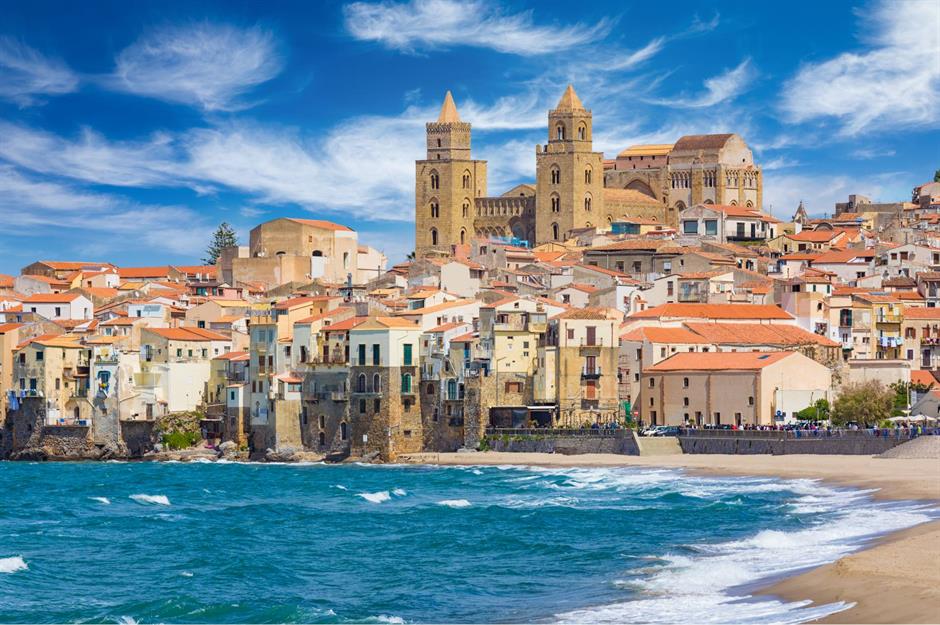
Situated on Sicily’s northern coast, Cefalu is ideally located if you’re looking to explore the sun-drenched island. With a welcome lack of visitors compared to popular Palermo and touristy Taormina, its rustic streets, spacious piazzas and old churches nestle beside breathtaking cliffs, while the small yet perfectly formed public beach of Kalura sits right at the edge of town. If you’re feeling up to it, make the ascent up to La Rocca, a craggy mountain home to a ruined Norman castle from 1061 AD.
Noto, Sicily
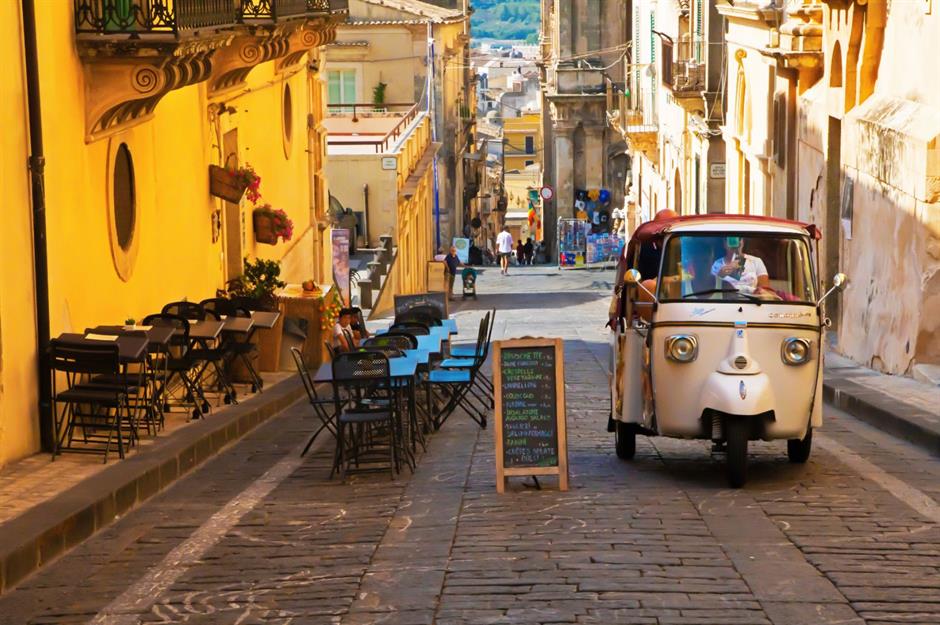
Baroque churches and palazzi, made from rich golden stone, make Noto a stunning and thoroughly underrated town to visit on the island of Sicily. Most of the architecture here technically dates back to the 18th century, as many of the town’s structures had to be rebuilt following an earthquake in 1693, but architects stuck to the original Baroque style. Dazzling buildings aside, be sure to check out the region’s secluded sandy beaches and incredible surrounding countryside. It's the perfect place for la dolce vita.
Bassano del Grappa, Veneto
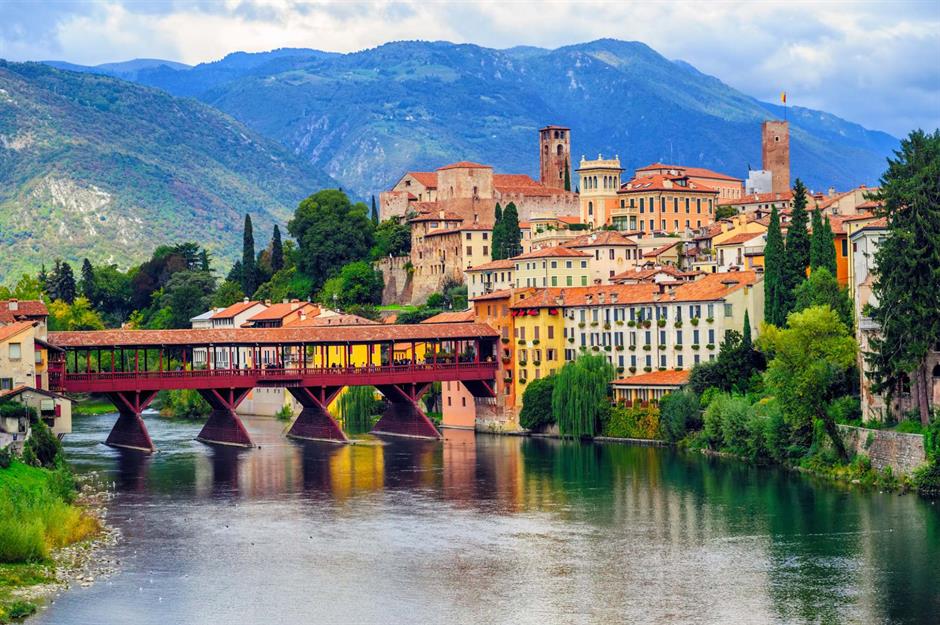
Located in the foothills of the Italian Alps, Bassano del Grappa offers picturesque medieval architecture, a brilliant food scene and plenty of sublime views. It also makes an ideal day trip from Venice and Padua – though we’d recommend visiting for longer to soak up its laid-back ambience. Don’t miss the impressive wooden 13th-century 'Ponte Vecchio' bridge, as well as the Poli Grappa Museum, where you can learn about the history of grappa, the grape-based spirit the town is named for.
Vipiteno, South Tyrol
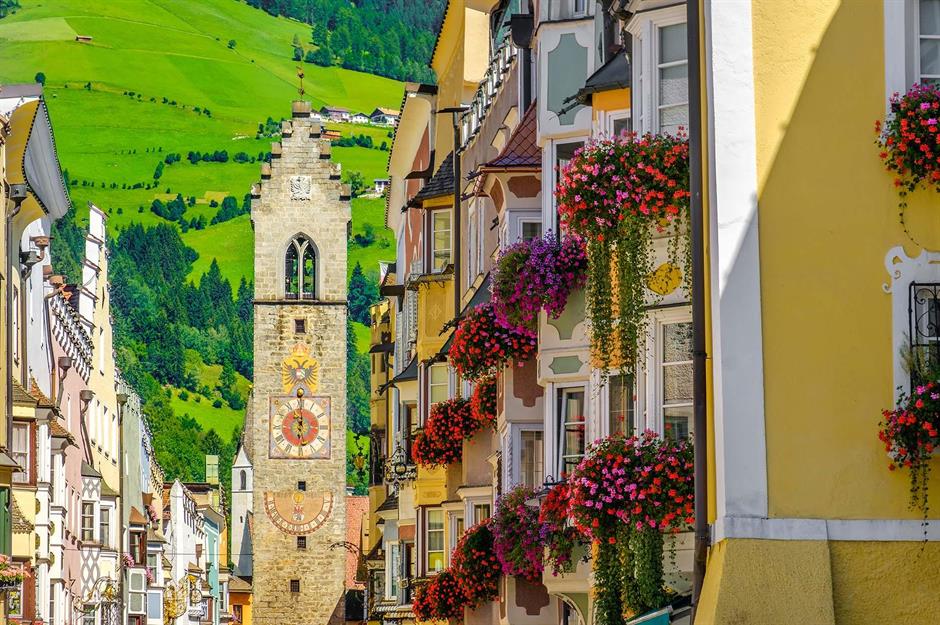
Owing to its location in the German-speaking province of South Tyrol, Vipiteno’s charming centre has a decidedly Austrian feel. The town is steeped in culture and history, with a main street that’s filled with Renaissance homes and brightly-painted townhouses, leading to its best-known landmark Torre delle Dodici (or Zwölferturm in German). Erected around 1470, this tower divides the old town from the new town. The nearby Dolomites provide ample opportunities for hiking, cycling and other adventures set among verdant scenery.
Cetara, Campania
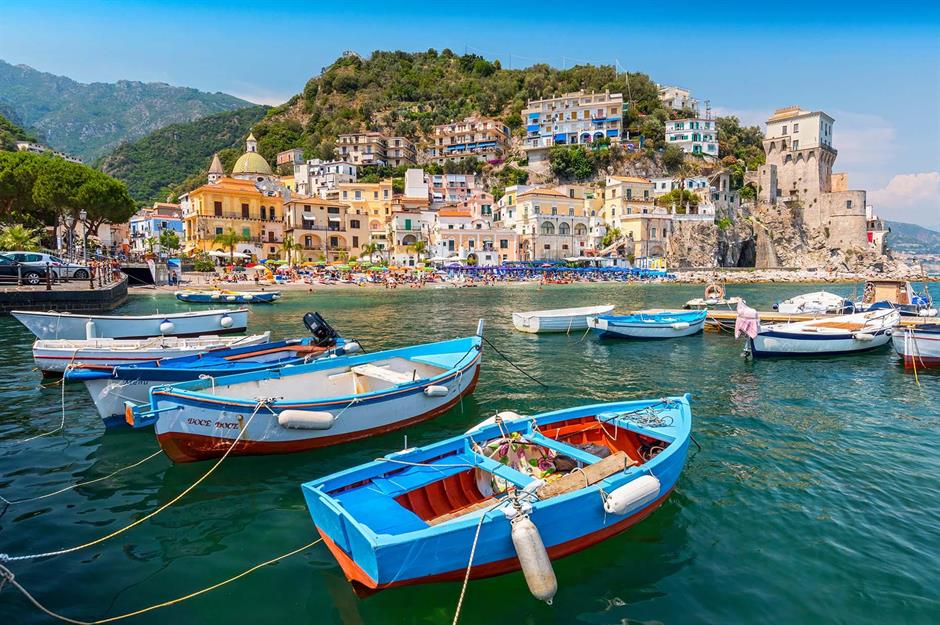
If you’re after a taste of the Amalfi Coast without the sun-seekers, look no further than postcard-perfect Cetara. With its pastel-coloured houses clinging on to the cliffside, this idyllic fishing village has an ideal mix of great food, secluded beaches and a laid-back pace of life. Thanks to the town's maritime heritage there are a range of seafood delicacies to sample, but chief among them are salted anchovies and colatura di alici – a fish sauce made from anchovies. Its main street, sloping down to a small sandy beach, is the best place to get a taste.
Molveno, Trentino
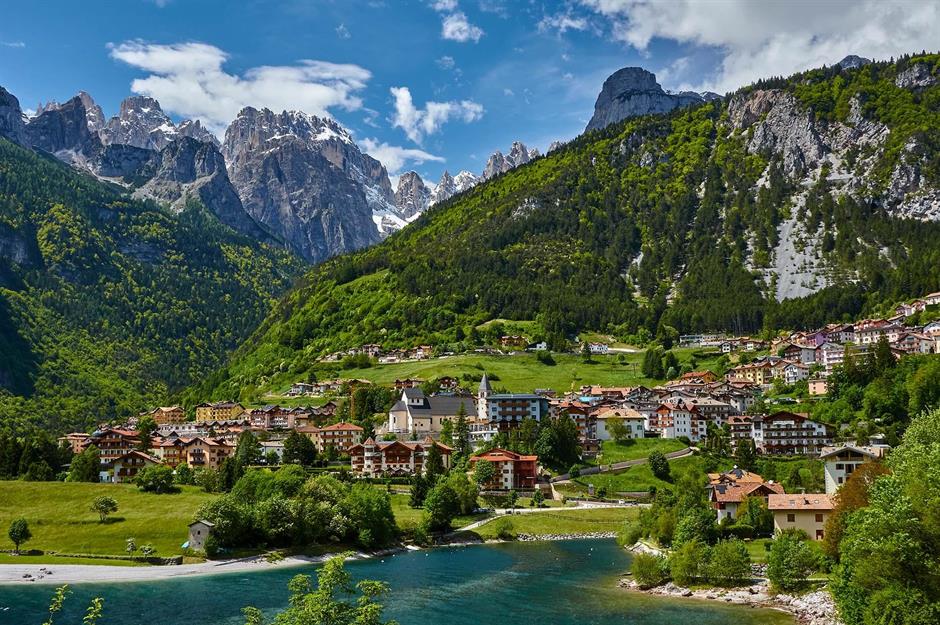
The Alpine village of Molveno, located in the northern Italian region of Trentino, is one of the prettiest we’ve laid eyes on. Given its proximity to the Dolomites and its sublime setting on the shores of Lake Molveno, the main draws here are outdoor pursuits: skiing and snowboarding at resorts in the winter and hiking in the summer. The town itself has a couple of historic treasures, like the 13th-century Church of San Vigilio and the Taialacqua medieval sawmill – lovingly restored and still in use today.
Castel Gandolfo, Lazio
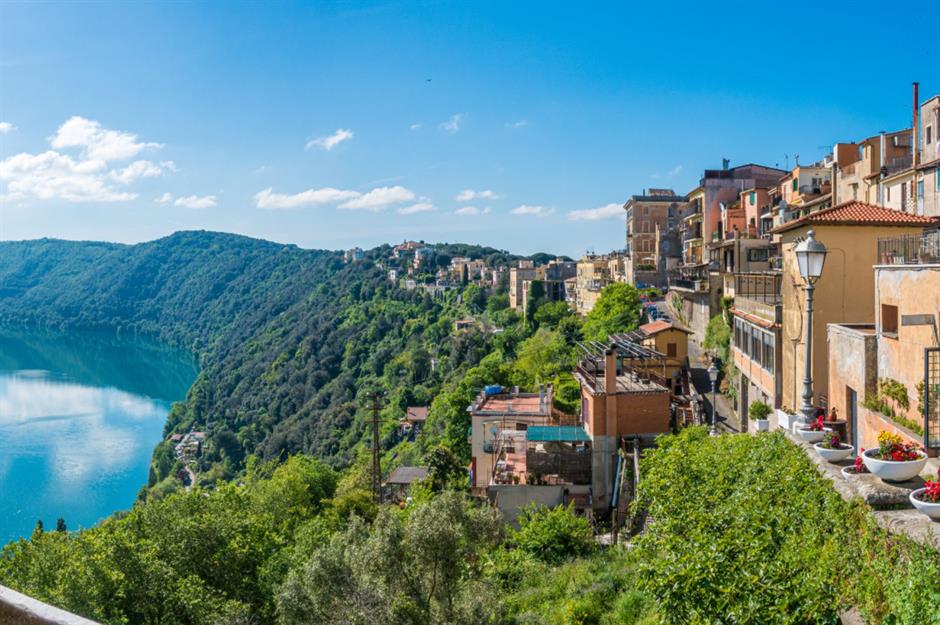
Few towns boast such a stunning location as Castel Gandolfo, which is perched dramatically above the volcanic Albano Lake in the central Italian province of Lazio. This underrated spot might be just 15 miles (24km) from Rome but it’s a world away from the bustling capital, its tranquil streets lined with alfresco cafés and independent shops, while terrace restaurants such as Le Fratte Ignoranti and Pagnanelli capitalise on those impressive caldera views. Perhaps the most famous attraction, however, is the 1620s Papal Palace, a lavish villa and garden complex that served as a summer residence for numerous popes right up until 2016, when it was transformed into a museum.
Chioggia, Veneto
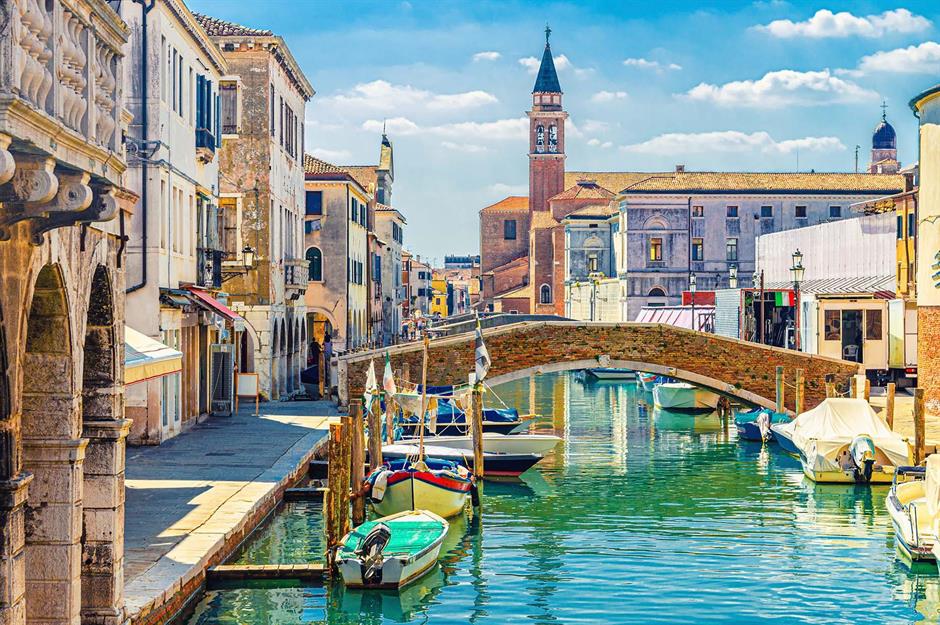
Looking a little like Venice but less crowded with tourists, Chioggia is located at the southern end of the Venetian lagoon and serves as a miniature version of the famous city. But its biggest claim to fame is that it’s one of the oldest and biggest fishing ports in Italy, with 400 fishing vessels to its name. If you can pull yourself out of bed early in the morning, you’ll see its streets come to life with trawlers returning with the night's catch, while the market fills with sea creatures of every shape and size. By lunchtime, the town is enveloped by the smell of frying fish ready to be served at local trattorias.
Castiglione di Garfagnana, Tuscany
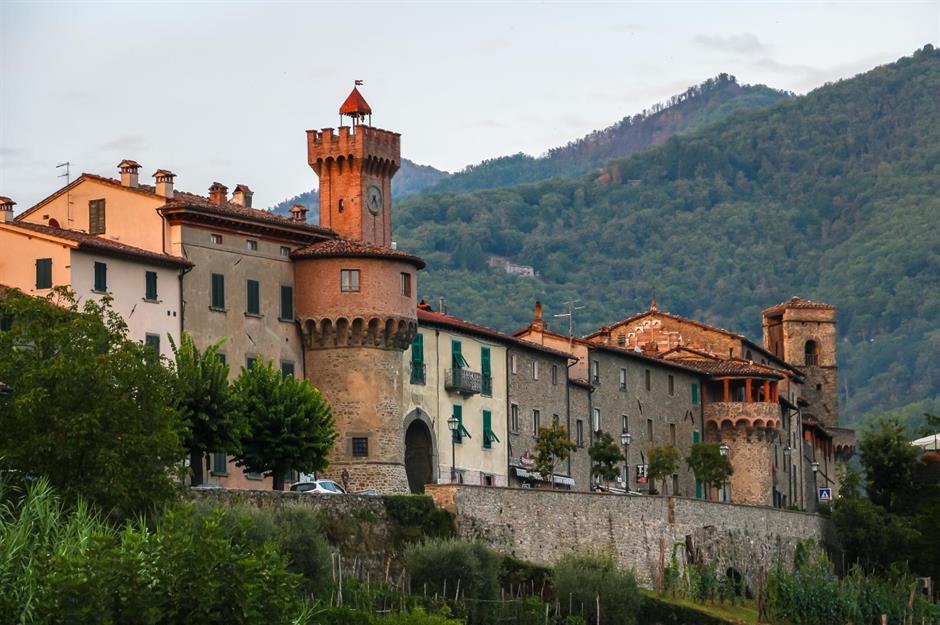
A foodie paradise in the heart of rural Tuscany, Castiglione di Garfagnana is the place to visit if you’re guided by your tastebuds. This medieval commune, situated in the province of Lucca, is famous for its locally grown polenta – many of the town's restaurants serve it with chestnuts and boiled pork bones – while mushrooms, truffles and potato bread are also staples of the region’s cuisine. Food aside, the settlement serves up plenty of jaw-dropping views, while its exceptional medieval walls are well-worth exploring.
Ravello, Salerno
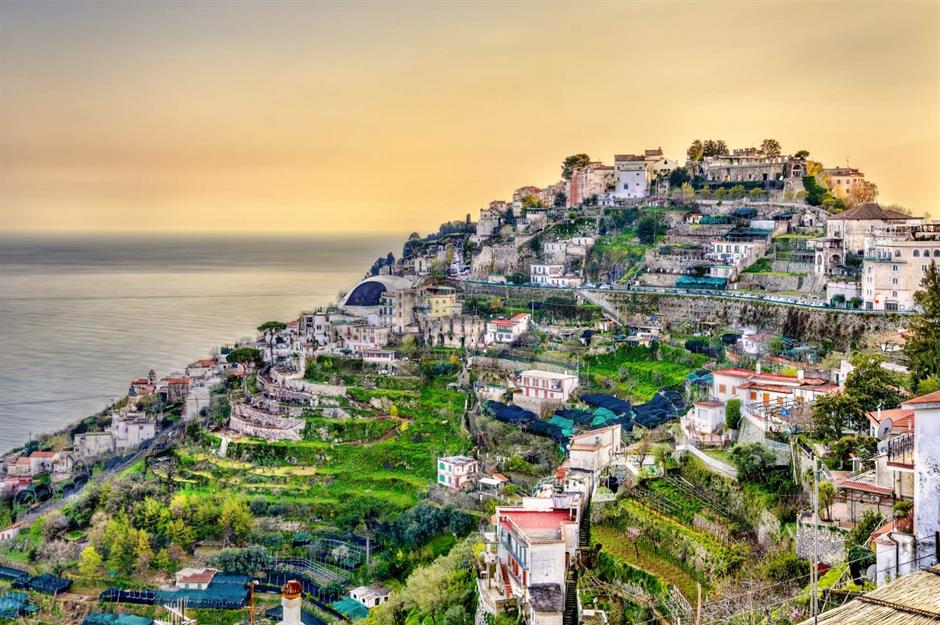
Despite being on the popular Amalfi Coast, Ravello remains slightly more under-the-radar than towns like Amalfi, Positano and Capri. Situated at the top of a large hill, excellent views across rugged cliffs and jewel-bright seas are in abundance here, while cafés spilling out onto its (mostly car-free) streets and squares make this a perfect place to slow down for a while. Don’t miss the impressive Villa Rufolo, a 13th-century manor and gardens complete with spectacular cliff-edge and crenellated terrace.
Castelmezzano, Basilicata
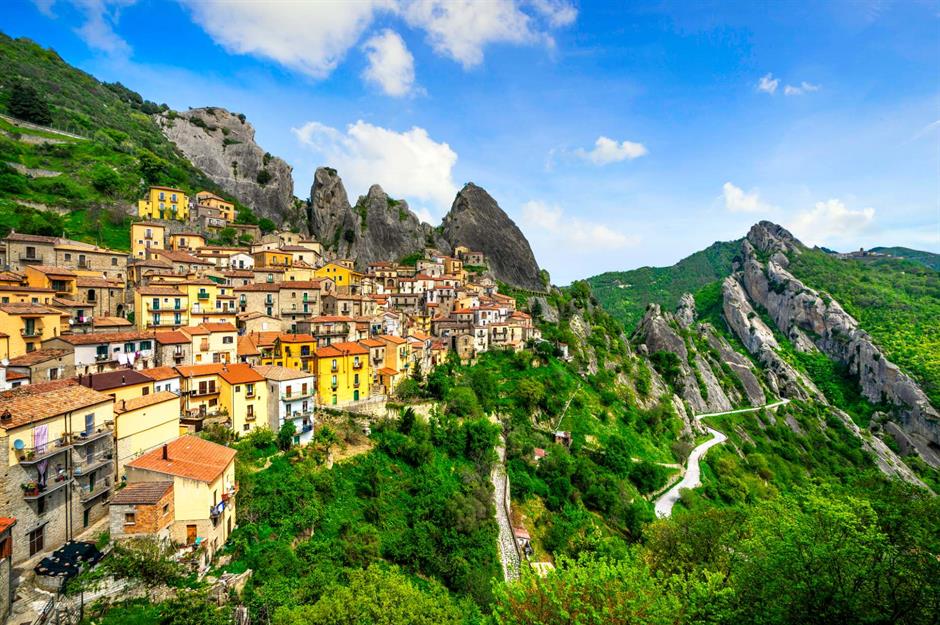
Lovers of untamed beauty should make a beeline for Castelmezzano, a village set amid the jagged karst peaks of Dolomiti Lucane in southern Italy. At least part of the reason it remains so underrated is its remoteness: the town can only be accessed via a single long, winding road, a two-and-a-half hour drive from Naples which passes through rock-hewn tunnels. Once you’re there, though, you’ll be captivated by its impressive vistas and historic architecture, including the remains of a Norman castle and the art-filled Church of Santa Maria Dell’Olmo.
Sottoguda, Veneto
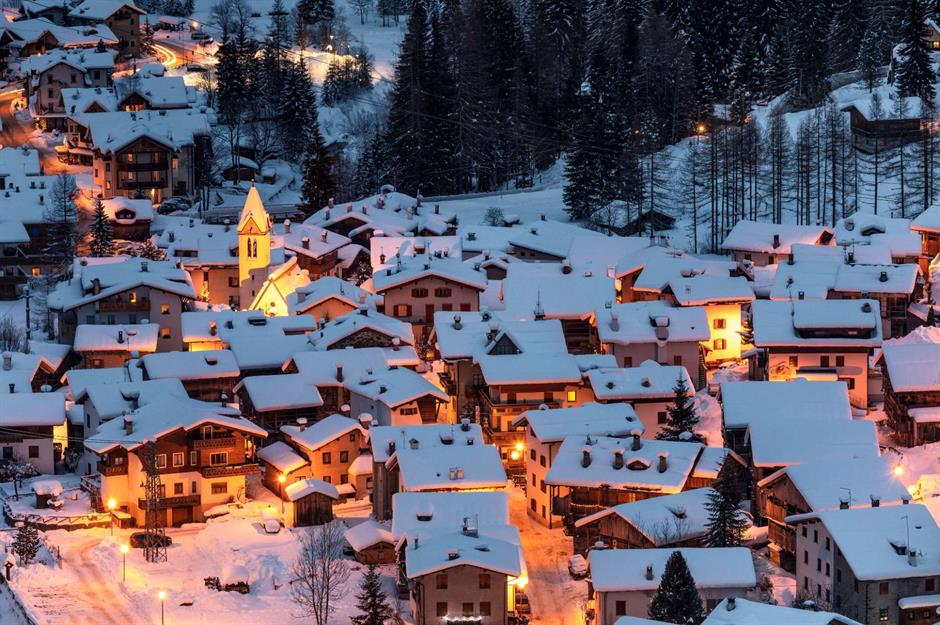
At the foot of Marmolada, the highest peak in the Dolomites, you’ll find the quaint Alpine hamlet of Sottoguda. This remarkable little village is best known for its tabièi, centuries-old, traditional wooden barns carefully maintained over the generations by skilful artisans. There’s a long history of craftsmanship in Sottoguda, with goods made from wrought iron, wood and gemstones available to buy at local shops.
Locorotondo, Puglia
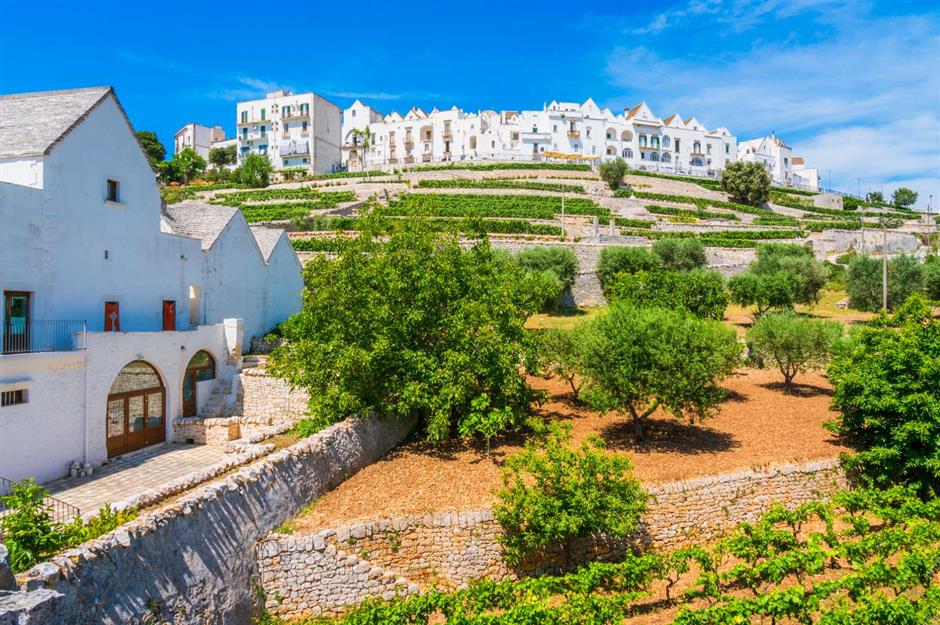
With its traditional whitewashed houses set amid verdant olive groves, Locorotondo has to be one of the prettiest towns in Puglia. The pedestrianised centro storico (town centre) is a joy to wander through, with its Baroque buildings, lavish arches and rainbows of shutters. Be sure to stop at one of its many alfresco restaurants to sample the local speciality, u tridde – pasta cooked in turkey broth – and wash it down with some locally produced PDO sparkling wine. Less than 30 minutes’ drive from the town, you’ll find gorgeous beaches (Cala Porto, Pilone, Quarto di Monte) and the famous trulli (conical stone hut) village of Alberobello.
Ragusa, Sicily
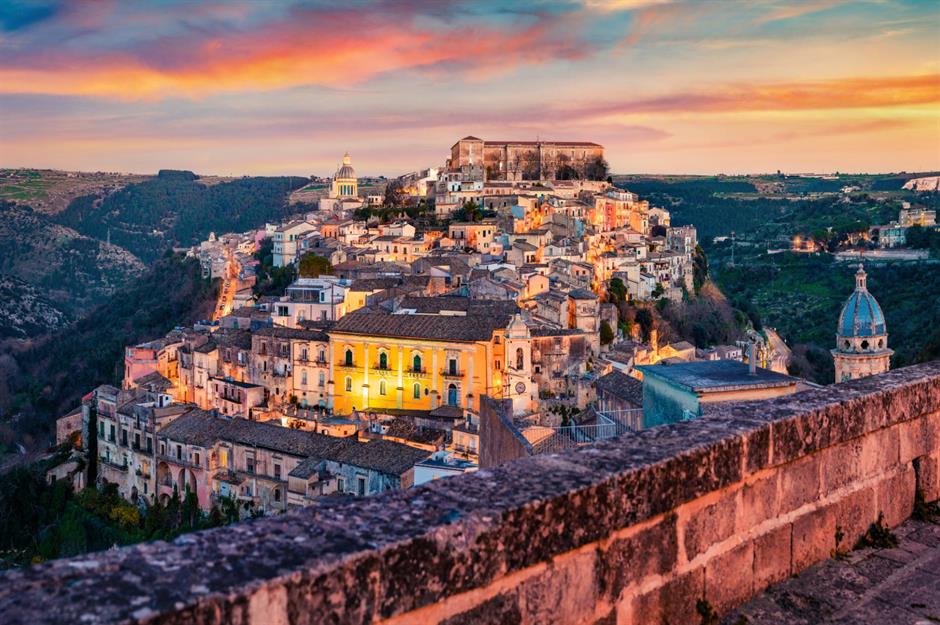
There are two sides to Ragusa, a town located in the rugged peaks of southern Sicily. At the top of the hill there’s Ragusa Superiore, the more modern neighbourhood, while a little lower down there’s the more historic Ragusa Ibla, with its maze-like streets. Both are striking in their own right, but the older Ibla region packs in more amazing architecture – there are at least 50 churches here – while its higgledy-piggledy alleyways lend themselves to leisurely strolling.
Comments
Be the first to comment
Do you want to comment on this article? You need to be signed in for this feature